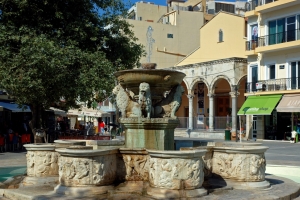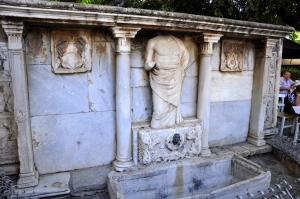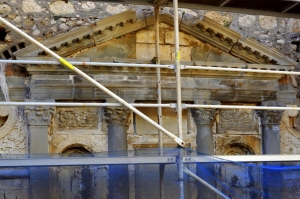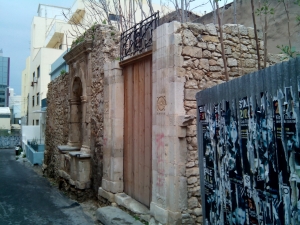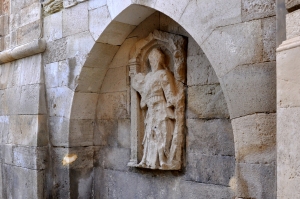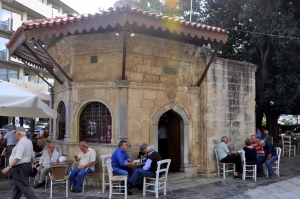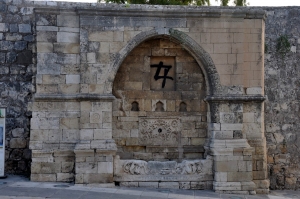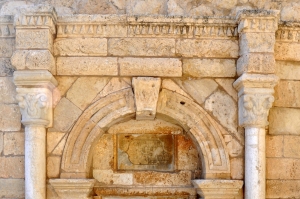The fountain of Morozini (known as Lions) is one of the nicest Venetian monuments of Candia (current Heraklion). The fountain was watered by the spring of Karidaki and the watered traveled about 15km in a gigantic aqueduct, one of the longest in the then world.
On the north side of the Kornarou square we meet the Venetian Bembo Fountain and the Turkish sebil (charity fountain) built later. The fountain was constructed between the years 1552-1554 during the rule of the captain Gian Matteo Bembo, who first watered Candia with spring water via aqueduct.
Priuli Fountain or Fontana Nuova is located at Delimarkou Street, behind the Bodossakio School and opposite the Venetian gate of Dermatas. It was built near the end of the great siege of Candia (1648-1669), after the Ottoman besiegers interrupted the water supply from the aqueduct that carried water from Youchtas area.
The Fountain of Ibrahim Babas is located, in a terrible situation, in current Almyrou street, just north of the Park Theotokopoulos. Unfortunately, strangers have stolen parts of elaborate relief plates that adorned the fountain. The fountain is fitted on the exterior wall of the house of Ibrahim Baba that has now collapsed.
The fountain that we meet today in the north wall of the Venetian Loggia was built by the Duke Jiovani Sagredo during 1602-1604 to serve the nobles who were gathered in the Loggia.
The sebil of Kornarou Square, which now houses a municipal coffee shop, was built in 1776 by Hadji Ibrahim Aga who spent his entire fortune on its maintenance. It is a polygonal building with arched windows. Under each window there was a tap and a stone trough.
The fountain of Yenitsar Aga is located at the beginning of the Avenue Ikarou, below the epigraphy collection and opposite the Archaeological Museum. It was originally embeded outside a beautiful mansion on the corner of the streets Markou Avgeri and Paleologou, which was demolished in 1980.
The fountain is located at Michelidakis street, behind the Historical Museum of Crete. The fountain was not originally here, but adorned the exterior of the house of the doctor Idomeneas Markatatis. We can see two columns with capitals that bear performances with plants and an Ottoman inscription.
- 1
- 2











